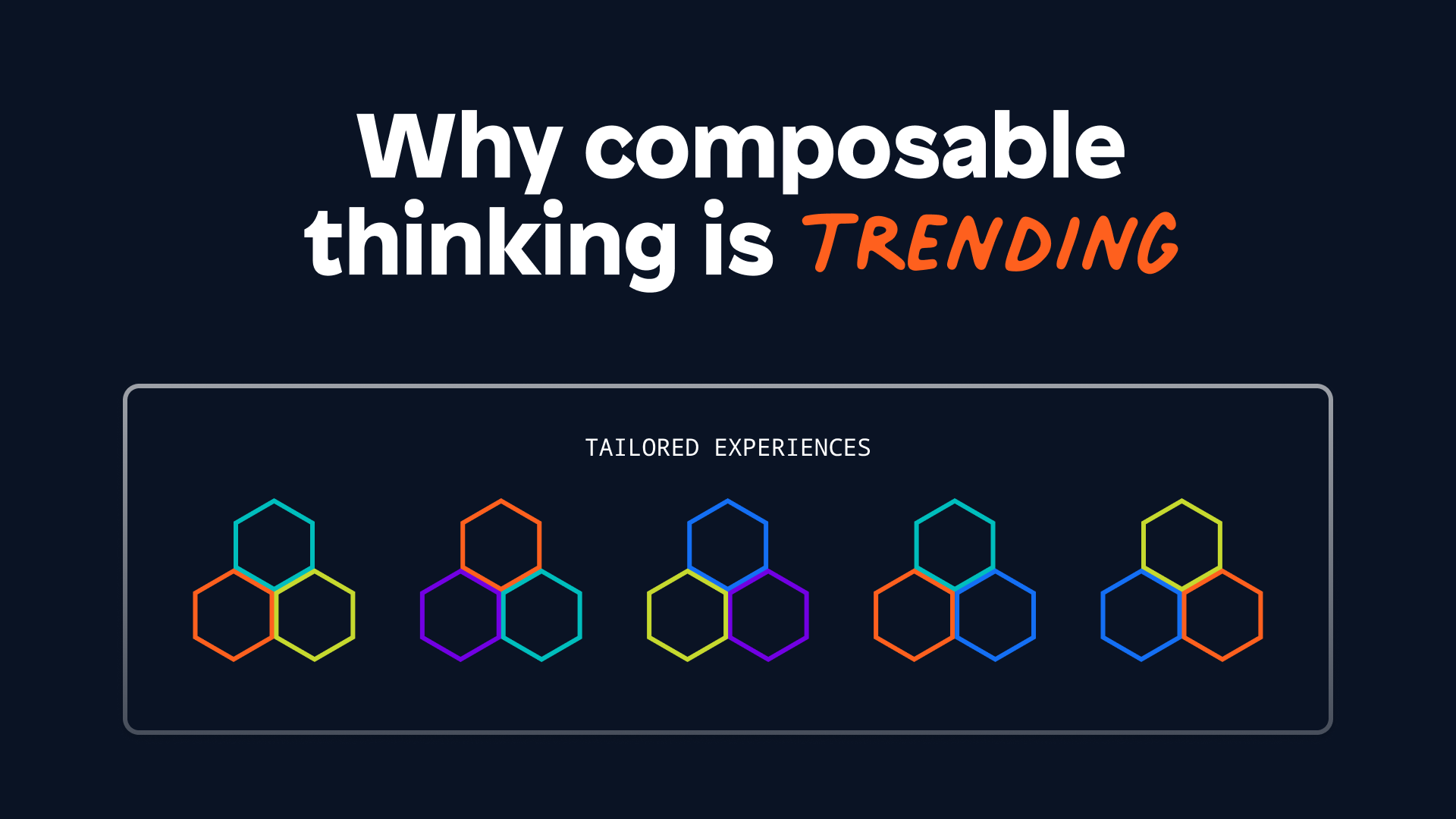How Manufacturers Can Build an Engine for Evolution with Composable Operations

Manufacturing never stops evolving to keep pace with the marketplace. Like other complex systems, manufacturing operations often evolve through simple steps. They take an elementary component and find a new or improved use for it. The easier it is for a manufacturer to repurpose the components of its operations, the more quickly they can evolve to meet changing business needs.
The concept of composable operations is designed to support manufacturing operations with applications built from simple building blocks of code that can be easily repurposed. Composable operations fuel the flexibility a manufacturer needs to reduce costs, improve efficiency, and allocate resources more effectively. They are an engine for evolution.
Defeat defects with composable operations
We’ll get into the gritty details of how composable operations can accelerate a manufacturer’s evolution by maximizing their system investments. But first, let’s take a look at composable operations in action.
In our scenario, a custom vehicle manufacturer has been experiencing delivery delays due to persistent defects in its assembled products. To fix the problem, the manufacturer wants to introduce a visual inspection step to its assembly process.
The manufacturer instructs its assembly line inspectors to mark any defects they see on the line. The inspectors then document the defects on an Excel spreadsheet so that employees farther down the line can address them. To no surprise, manually marking products on the line and cross-checking spreadsheets proves to be grossly inefficient.

Composable operations to the rescue
From its library of reusable components, the manufacturer creates an app that the assembly inspectors can use to note defects on a mobile tablet. The app comes with an inspection check list preloaded with product part data and a visual map of the inspection areas.
A landing page compiles all the defect data from the inspectors’ devices. The workers down the line can then easily track defective products and make timely decisions on how to fix them.
With the initial inspection app built, it’s simple for the manufacturer to create additional capabilities or additional apps to work seamlessly alongside it from the same building blocks.
The inspection app could be extended by connecting it to the shop floor cameras so it can automatically read the ID of the assembly line products or snap a picture of a logged defect. Voice documentation software could be added so the inspectors don’t have to pull their attention away from the line to manually enter their findings.
The building blocks can be deployed locally, or they can be connected to the cloud. A cloud connection promotes:
- Every branch of the inspection process working seamlessly together
- Data being shared freely throughout the shop floor to create actionable insights and feed machine learning models
- Inspection applications gaining access to AI agents that can boost their capabilities and efficiency
From this example, you can see how the adaptability of composable operations can effortlessly evolve to fine-tune old solutions and create fresh ones as new business needs arise.
How composability untangles complexity
So what kind of manufacturing organization can best benefit from composable operations? The more tangled and complex your systems are, the more you could benefit from the flexibility and adaptability provided by composable operations.
Manufacturing operations are often systems nested within systems or a pasted together mixture of new and legacy systems. Sometimes the systems are well connected and work smoothly together. Other times, not so much.
The shop floor is often where you can get the clearest view of how well a manufacturer’s systems work together. It’s where so many systems come together: order fulfillment, product design, quality management, shipping and delivery. Composable operations make sure that those systems connect predictably and dependably. That then allows those systems to create powerful connections between people, products, processes, and data.
Composable to our core
A low-code application development platform like Mendix is the perfect tool for building the applications that support a composable operation.
Mendix lets you build applications from a library of reusable, modular low-code components. Every team in your organization can use these shared components to create applications perfectly suited to their operations. And because these components all share the same platform, the operations your teams build can work flawlessly together.
Just like your organization, Mendix, a Siemens Business, is constantly evolving. You’ll find that composability is one of the core capabilities of the latest release of the Mendix platform, Mendix 10. And that it’s the key to integrating essential capabilities from Siemens Xcelerator and AWS into the building blocks Mendix provides.
If you’d like to learn more about the Mendix low-code application development platform or about how low-code effortlessly supports composable operations, contact us.
